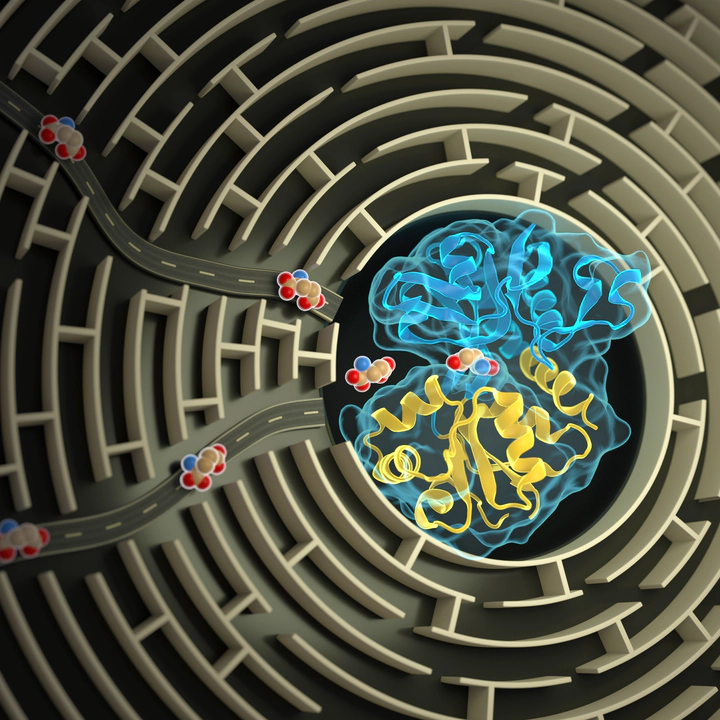 Alvin Yu
Alvin Yu
Abstract
Ionotropic glutamate receptors (iGluRs) mediate neurotransmission at the majority of excitatory synapses in the brain. Little is known, however, about how glutamate reaches the recessed binding pocket in iGluR ligand-binding domains (LBDs). Here we report the process of glutamate binding to a prototypical iGluR, GluA2, in atomistic detail using unbiased molecular simulations. Charged residues on the LBD surface form pathways that facilitate glutamate binding by effectively reducing a three-dimensional diffusion process to a spatially constrained, two-dimensional one. Free energy calculations identify residues that metastably bind glutamate and help guide it into the binding pocket. These simulations also reveal that glutamate can bind in an inverted conformation and also reorient while in its pocket. Electrophysiological recordings demonstrate that eliminating these transient binding sites slows activation and deactivation, consistent with slower glutamate binding and unbinding. These results suggest that binding pathways have evolved to optimize rapid responses of AMPA-type iGluRs at synapses.